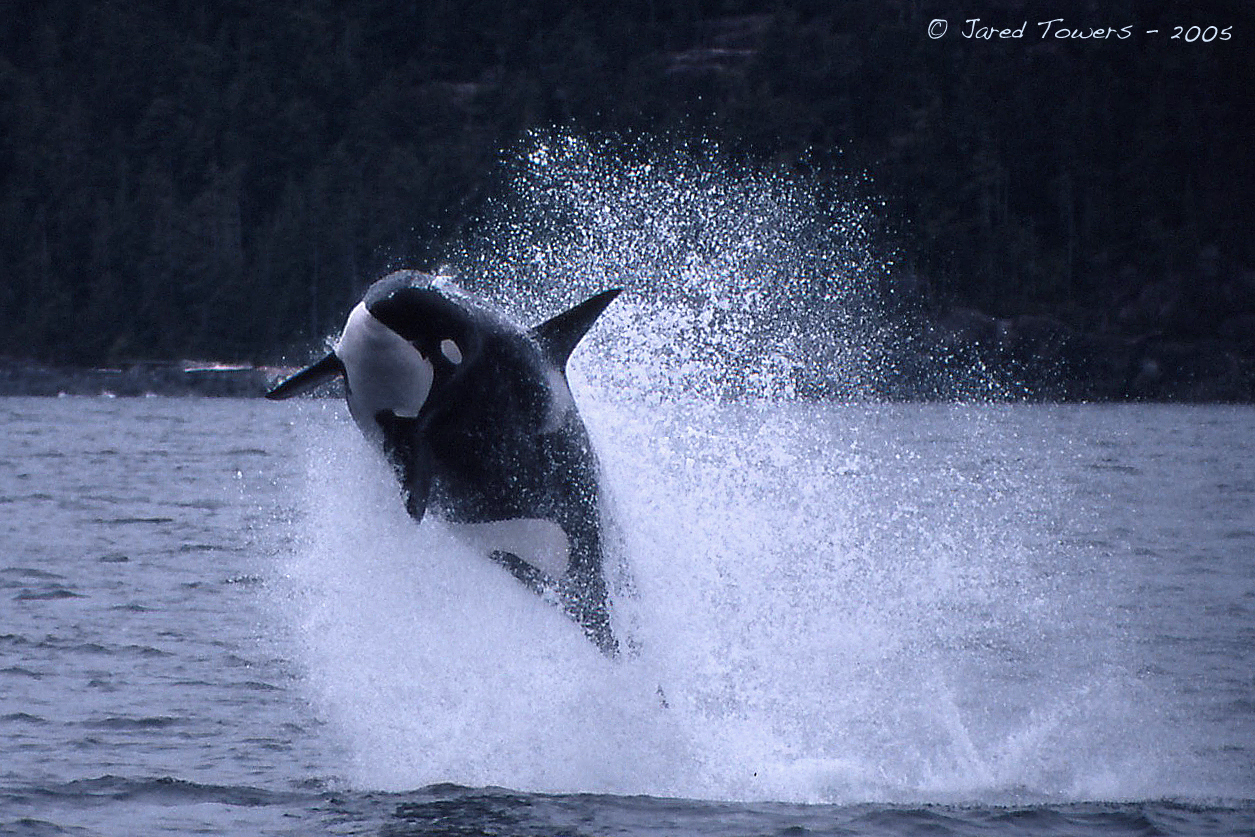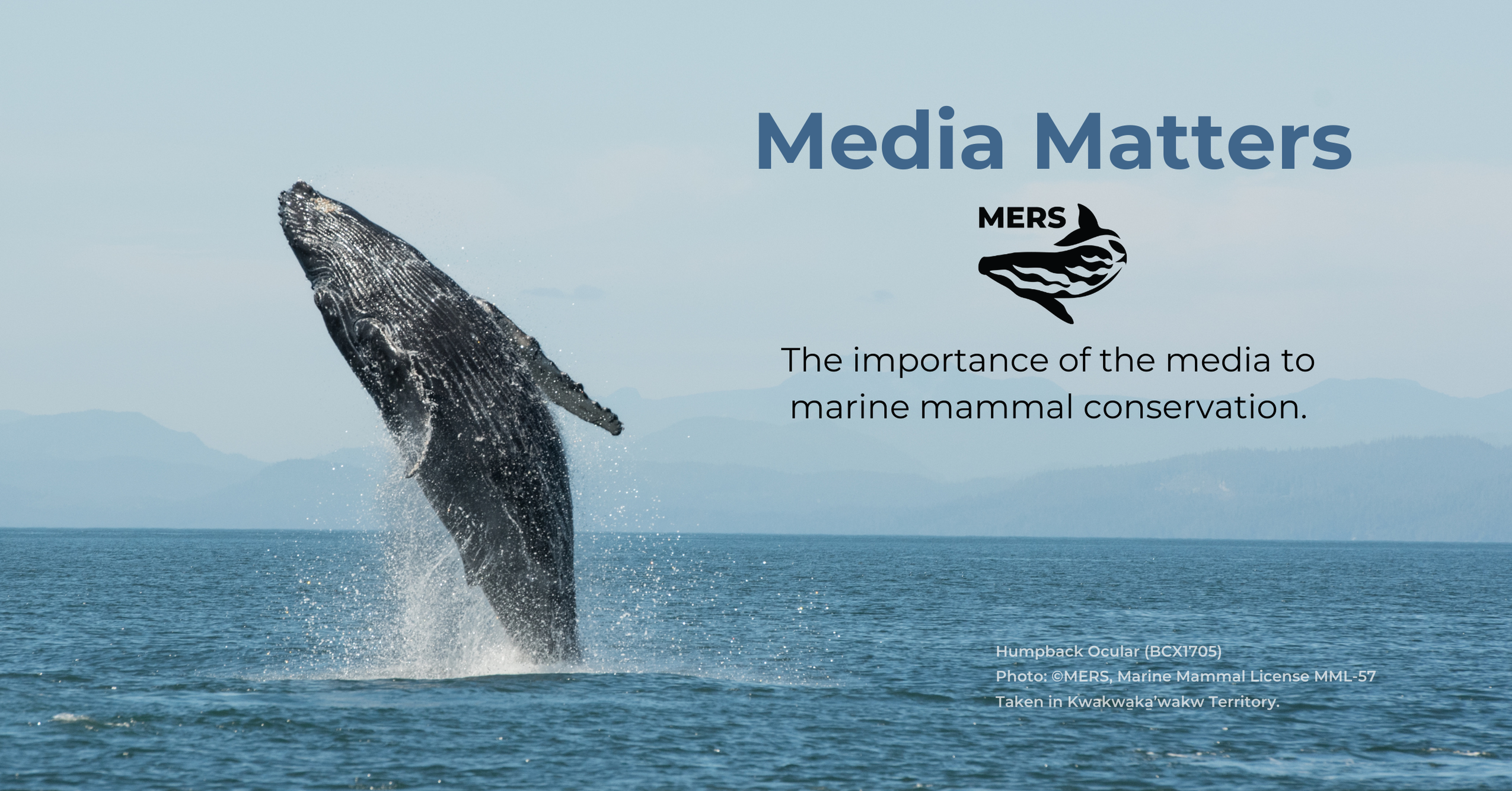[Update: Transient Killer Whales are now more often referenced as “Bigg’s Killer Whales”. See our colleague’s blog at this link for why this is.}
When Fisheries and Oceans biologist Dr. Mike Bigg began research on wild killer whales in BC in the 1970s, he and colleagues quickly discovered that two different types of orcas inhabited the coastal waters. Resident orcas could reliably be found in large pods socializing and foraging for salmon while another type of orca was only seen occasionally and always in small groups. These whales typically acted evasive and only appeared to target mammalian prey. Due to their random movements and unpredictability Bigg called them Transients.

One interesting trait that Transients exhibited was their tendency to usually remain silent. This was because the species that Transients hunt have good hearing abilities and some prey populations such as harbour seals, Steller sea lions and harbour porpoises were low in the 1970s. This meant that Transients had to be relatively anti-social in order to not scare away what little prey they could find. However, over the last few decades seal, sea lion, and some porpoise populations have slowly rebounded in BC. During this time dolphins have also colonized coastal waters. Subsequently, Transient killer whales have become more common and are now typically found traveling, socializing and hunting in larger groups. Interestingly, these groups are often very vocal, especially after a kill.
For example, in the summer of 2012, MERS conducted a shore-based visual and acoustic study of whales off northern Vancouver Island. Late on the night of July 7th, the underwater monitoring device recorded what can be interpreted as a successful attack on Pacific white-sided dolphins several miles in the distance. On the clip below one can hear a few faint Transient calls and echolocation, followed by panicked dolphins and what killer whale acoustic expert Dr. Volker Deecke has referred to as a killing, ramming and crushing sound or KRACS.
http://www.youtube.com/watch?v=9SrMASe4MGc
These sounds were followed by more KRACS and then a huge amount of acoustic activity from the Transients including whistles, echolocation and both typical and aberrant calls as well as splashes. This behaviour continued for hours. The short clip below is a sample of these calls while the whales passed directly over the recording device.
http://www.youtube.com/watch?v=wn5jZwiQajY
On site MERS research volunteer, Rebecca Piercey, was awoken by the blows of these passing whales at around 1:00 am on July 8th. From the number of blows audible it was clear that several whales were present but interestingly, she could also hear these whales vocalizing above the surface. She made this recording with her iPhone at the same time the above clip was recorded underwater.
http://www.youtube.com/watch?v=SlPZLO7fpKw
Although we have never heard of anyone else ever hearing Transient calls repeated above the surface of the water, encounters with these whales are becoming increasingly common. Several hydrophone networks regularly report detecting Transient killer whales and more people are observing predation events and social behaviour from whale watch boats, ferries and even from shore. Collectively, we are coming to realize that these whales are actually no longer transient.
In fact, because of renewed prey resources Transient killer whales have become more common than Resident killer whales along some parts of the coast. In addition to the behavioural differences between these types of orcas, geneticist Dr. Phillip Morin and colleagues recently discovered that Transients diverged from Residents and other killer whale types around 700,000 years ago. Consequently, it has been argued that Transient killer whales deserve their own species status and a more appropriate name. As Mike Bigg is acknowledged all over the world as the first to recognize how unique these whales were, most killer whale researchers agree that the name Bigg’s is more appropriate than Transient for this population of killer whale.

To learn more about these whales check out the sources below. To listen to Bigg’s killer whales live check out Orca-Live. If you see a Bigg’s killer whale let the BC Cetacean Sightings Network know. For more background on the proposed name change see The Marine Detective. And for more educational items and updates from the field from MERS researchers and educators, follow this blog, “like” us on facebook, check out our website and subscribe to our youtube channel.
~JT
Sources:
-Bigg, M.A. 1982. An assessment of killer whale (Orcinus orca) stocks off Vancouver Island, British Columbia. Rep. Int. Whal. Commn. 32: 655-666.
-Deecke, V.B., Ford, J.K.B., and Slater, P.J.B. 2005. The vocal behaviour of mammal-eating killer whales: Communicating with costly calls. Anim. Behav. 69(2): 395-405.
-Ford, J.K.B. 2011. Killer whales of the Pacific northwest coast: From pest to paragon. Whalewatcher (J. Amer. Cetacean Soc.) 40 (1):15-23.
-Ford, J.K.B., and G.M. Ellis. 1999. Transients: Mammal-Hunting Killer Whales. UBC Press, Vancouver, British Columbia. 96 pp.
-Morin, P.A., Archer, F.I., Foote, A.D., Vilstrup, J., Allen, E.E., Wade, P., Durban, J., Parsons, K., Pitman, R., Li, L., Bouffard, P. Nielsen, S.C.A., Rasmussen, M., Willerslev, E., Gilbert, M.T.P., and Harkins, T. 2010. Complete mitochondrial genome phylogeographic analysis of killer whales (Orcinus orca) indicates multiple species. Genome Res. 20, 908–916.


